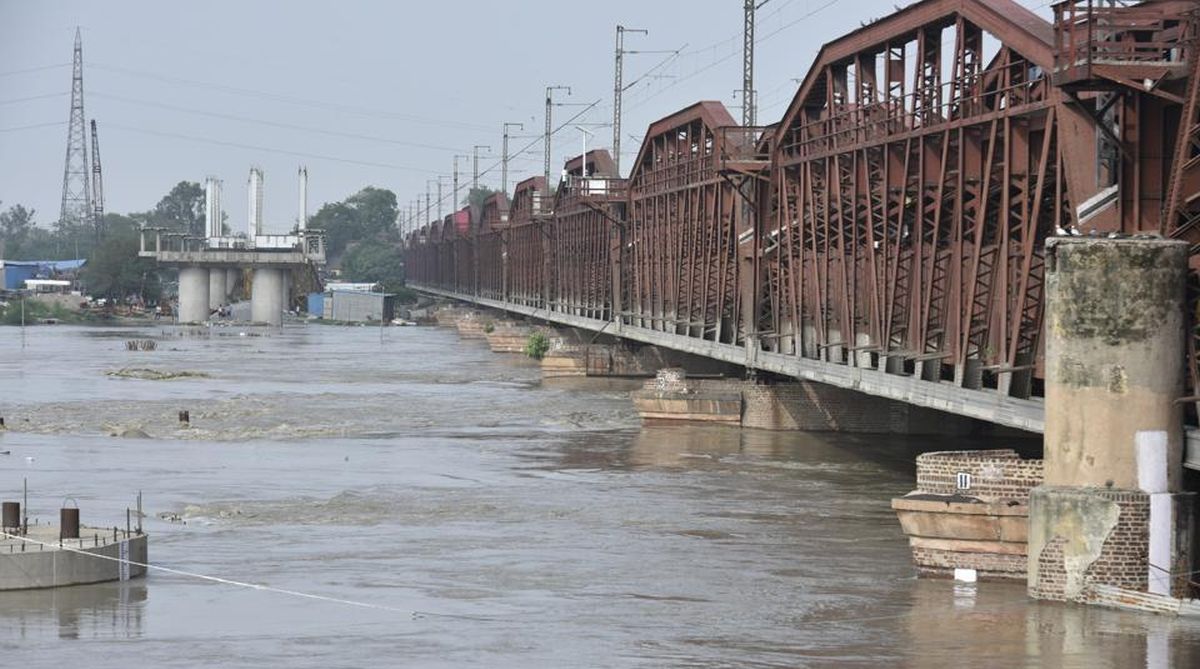The Yamuna river is at its “healthiest” state for the first time this year as its water quality has drastically improved due to the rise in inflow of flood water, experts have said.
The improvement is largely due to the increased oxygen content of flood water which washes away pollutants in the river, they said.
Advertisement
Yesterday, the water level in Yamuna surpassed the danger mark of 204.83 metres, forcing evacuation of around 10,000 people from the low-lying areas, after around 5,13,554 cusecs was released by the Hathini Kund barrage.
One of the most important rivers in the country, Yamuna passes through Uttarakhand, Haryana, Delhi, and Uttar Pradesh. It merges with the Ganga at Allahabad.
Yamuna has also earned the unpleasant distinction of being one of the most polluted rivers in the country.
But the quality of water in Yamuna has improved in the last two days due to increased flow, experts said.
Manoj Mishra, convener of the Yamuna Jiye Abhiyaan, termed the improvement as a “temporary effect which would go with the monsoon season”.
“The quality of Yamuna water is at its healthiest state for the first time this year but that is due to the better water flow. Any water that is flowing always has better quality as it has increased oxygen content which washes away the existing pollutants and also prevents further pollutants from entering,” he said.
He highlighted the need to maintain the healthy state of the river.
“There is a need to maintain environmental flow at Hathini Kund Barrage to ensure that the aquatic flora and fauna flourish as they are dependent upon the environmental flow,” he said.
Environmental flow is quantity, timing, and quality of water flows required to sustain freshwater and estuarine ecosystems.
The experts, however, expressed apprehensions about the longevity of the improved state of the river.
Faiyaz Khudsar, a scientist at the Yamuna Biodiversity Park, said this temporary improvement in water quality of Yamuna is an yearly affair and to retain this quality there is a need to make wetlands.
Wetland is an area of land that is saturated with water either permanently or seasonally. They play a very important function of filtering water. As water moves through a wetland, the sediments and pollutants ‘stick’ in the wetland, making the water cleaner. Wetlands also help reduce flooding and prevent shoreline erosion.
Khudsar said wetlands, which can act as “kidneys” for Yamuna, should be made between Palla and Okhla to retain the flood water and ensure long-term benefits.
“These wetlands can act as a lifeline for Yamuna and can also be used to sustain the aquatic life which has been severely destroyed by the pollution in Yamuna,” he said.
“There are several floodplains between Palla and Wazirabad that can be used for making wetlands,” he added.
Manu Bhatnagar, Principal Director, Indian National Trust for Art and Cultural Heritage (INTACH), who has been involved in crafting urban water policy and unconventional wastewater treatment, suggested that to maintain the quality, there is a need to divert less water from the 75-km-long Hathini Kund barrage to eastern and western canal of Yamuna for irrigation.
The experts said that the temporary healthy state of Yamuna would subside after the monsoon season and sewage water would again pollute the river.











